Making a Difference
Schoolyards provide an opportunity for the built environment to promote increased physical activity for children and the surrounding community. In addition, studies show that well-planned and equipped schoolyards increase physical activity while also enhancing the learning environment resulting in improved achievement. Such play areas provide physical and mental challenges that translate to improved health and learning attention. Furthermore, with proper design, these areas themselves become outdoor classrooms or learning landscapes and fulfill, a secondary goal for many schools to become a positive focal point of the neighborhood, place to community’s appearance.
Improving schoolyards is a proactive way to benefit health at the community level. The surge in childhood obesity, in recent years, threatens the future health of Colorado. According to the Colorado Health Report Card published by the Colorado Health Foundation, “Colorado ranks 23rd among the states in the category of childhood obesity dropping in rank from 3rd to 23rd in just four years. The current ranking signals a rapid increase in the prevalence of childhood obesity that negatively impacts the overall health and well-being of Colorado’s children. Preventing and combating the childhood obesity epidemic will require a multi-faceted approach. “It means changing behaviors around food intake, physical activity and our residential community. It means addressing the environment in schools and rethinking our culture to emphasize good health” says James O. Hill Professor of Pediatrics and Medicine at the University of Colorado School of Medicine.
The Colorado Health Foundation believes that if kids are a part of a “healthy school” including but not limited to access to physical activity and healthy foods, then they will be more likely to learn better and maintain a healthy lifestyle throughout life. In addition, The Foundation upholds that thoughtful design of a new or renovated activity space at the children’s school can promote greater levels of moderate or vigorous physical activity and decrease sedentary activity. The Active Play Areas planning grants provided an opportunity for school districts to partner with Learning Landscapes to develop elementary school Active Play Area Master Plans.
In January 2011 the Adams County School District 14 was awarded an Active Play Areas planning grant from the Colorado Health Foundation.
Schoolyard Master Plans
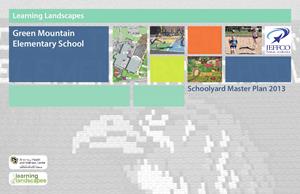 Green Mountain Elementary
Green Mountain Elementary
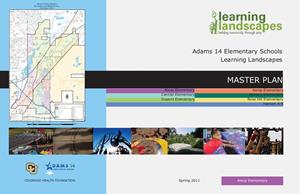 Alsup
Alsup
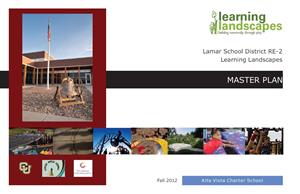 Alta Vista
Alta Vista
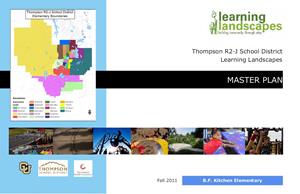 B.F. Kitchen
B.F. Kitchen
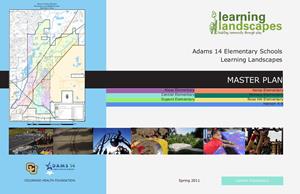 Central
Central
 Clifton
Clifton
 Dupont
Dupont
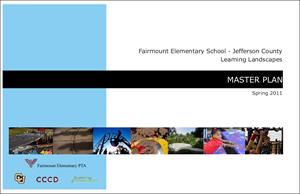 Fairmount
Fairmount
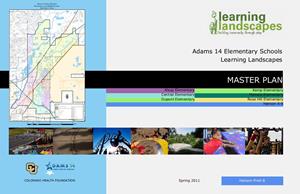 Hanson
Hanson
 Hayden Elementary
Hayden Elementary
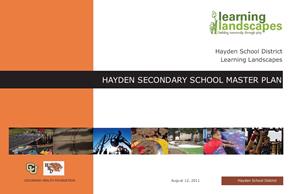 Hayden Secondary
Hayden Secondary
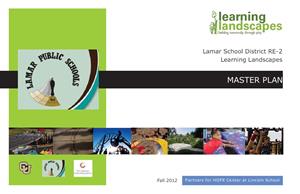 Partners for HOPE Center at Lincoln School
Partners for HOPE Center at Lincoln School
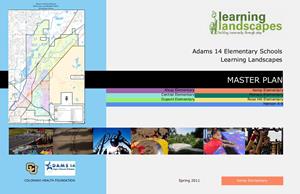 Kemp
Kemp
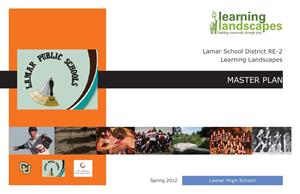 Lamar High School
Lamar High School
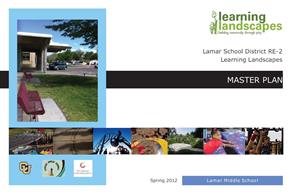 Lamar Middle School
Lamar Middle School
 Lincoln Orchard Mesa Elementary
Lincoln Orchard Mesa Elementary
 Monaco
Monaco
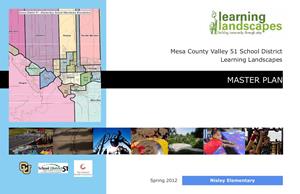 Nisley
Nisley
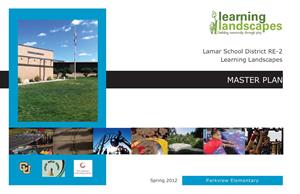 ParkView
ParkView
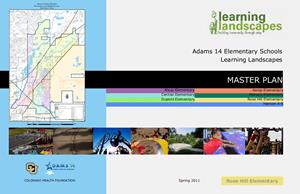 Rose
Rose
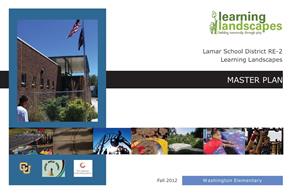 Washington
Washington
Schoolyard Summaries
Active Play Areas
Introduction
Schoolyards provide an opportunity for the built environment to promote increased physical activity for children and the surrounding community. In addition, studies show that well-planned and equipped schoolyards increase physical activity while also enhancing the learning environment resulting in improved achievement. Such play areas provide physical and mental challenges that translate to improved health and learning attention. Furthermore, with proper design, these areas themselves become outdoor classrooms or learning landscapes and fulfill, a secondary goal for many schools to become a positive focal point of the neighborhood, place to gather and to meet, a place to enjoy, a place that enhances the community’s appearance.
Improving schoolyards is a proactive way to benefit health at the community level. The surge in childhood obesity, in recent years, threatens the future health of Colorado. According to the Colorado Health Report Card published by the Colorado Health Foundation, “Colorado ranks 23rd among the states in the category of childhood obesity dropping in rank from 3rd to 23rd in just four years. The current ranking signals a rapid increase in the prevalence of childhood obesity that negatively impacts the overall health and well-being of Colorado’s children. Preventing and combating the childhood obesity epidemic will require a multi-faceted approach. “It means changing behaviors around food intake, physical activity and our residential community. It means addressing the environment in schools and rethinking our culture to emphasize good health” says James O. Hill Professor of Pediatrics and Medicine at the University of Colorado School of Medicine.
In January 2011 the AdamsCountySchool District 14 was awarded an Active Play Areas planning grant from the Colorado Health Foundation. The Colorado Health Foundation believes that if kids are a part of a “healthy school” including but not limited to access to physical activity and healthy foods, then they will be more likely to learn better and maintain a healthy lifestyle throughout life. In addition, The Foundation upholds that thoughtful design of a new or renovated activity space at the children’s school can promote greater levels of moderate or vigorous physical activity and decrease sedentary activity.
The Active Play Areas planning grant provided an opportunity for the school district to partner with Learning Landscapes at the University of Colorado Denver to develop seven elementary school Active Play Area Master Plans.
The Learning Landscape program within the ColoradoCenter for Community Development at the College of Architecture and Planning seeks to strengthen elementary schools and their surrounding neighborhoods by designing playgrounds to promote physical activity and social interaction. With over ninety schoolyard renovations complete, the success of this program is founded on a mutual respect of aesthetic, maintainability, safety, and recreational issues.
Colorado Health Foundation
The Foundation seeks to fund active play spaces for schools designed to promote play and other forms of physical activity. This includes field/ground designs or markings that facilitate games and other forms of movement. Healthy Schools & Healthy Communities
Vision: Colorado will become the healthiest state in the nation.
Mission: To improve the health and health care of Coloradans by increasing access to quality health care and encouraging healthy lifestyle choices.
The Foundation’s Funding Strategies are:
- Develop healthy schools — Expand the number of public schools and preschools that provide health care services, have health and nutrition education, physical education, healthy food in cafeterias and vending machines, and opportunities for physical activity.
- Promote healthy communities — Expand access to healthy and affordable foods; provide safe options for physical activity; teach individuals how to manage their chronic disease; and engage parents in raising healthy kids.
The Measurable Results are:
- Increase the number of children and adults who engage in moderate or vigorous physical activity.
- Increase the number of children and adults who eat adequate amounts of fruits and vegetables daily.
- Increase the number of underserved Coloradans who have convenient access to recreational exercise and fruits and vegetables.
Adams County School District 14
Adams 14, located in Commerce City, is Colorado’s 23rd largest school district, serving nearly 7,000 students and 33,000 residents annually. Adams 14 strives to ensure academic success for every student by providing highly effective classroom instruction, supplemental enrichment opportunities and parent/family collaboration opportunities.
Commerce City is a highly-industrialized community bisected by industry and busy roadways, with limited walkable and accessible play spaces. Schools and neighboring communities become little ‘islands’ unto themselves, establishing a premium on available areas to play and recreate.
The Adams-14 community has a high population of low income residents with 82 percent of students in the district qualify for free or reduced lunch. Additionally, 81 percent of students are Hispanic, with 57 percent identifying Spanish or another language as their primary language.
Total Enrollment: 6,702
77% Hispanic
18% Anglo
3% African American
2% American Indian
Hispanic children in Colorado are three times more likely to be obese, further emphasizing the importance of providing quality play spaces. (Colorado Health Report Card)
Wellness
Adams 14 schools are engaged in a number of wellness initiatives, including school gardens, youth farmers’ markets, the flat fourteeners running program and serving healthier cafeteria foods. Adams 14 decision makers believe that healthy students are healthy learners. The District is developing a culture of school wellness and active play areas.
Increasing physical activity not only aligns with the District’s Wellness initiatives but with the surrounding community’s as well. Commerce City is one of 16 Colorado municipalities recognized by the White House as a “Let’s Move City,” for its ability to promote and provide services that reduce childhood obesity. “Commerce City believes in promoting the health and well-being of all residents by offering services and amenities that promote an active lifestyle,” said Mayor Paul Natale. (Commerce City Press Release February 5, 2011)
Existing Challenges
Adams County School District 14 is an urban school district facing challenges common to other urban districts. The infrastructure is aging – the average facility age is over 50 years – and maintenance funding is limited leaving little if any budget available to improve schoolyards and play areas. Several Physical Education teachers and District Administrators have commented on the lack of play areas and equipment available for their students to be active. They have shared observations of students sitting around at recess and after school because they lack quality equipment and active play areas. The Adams 14 operations team agrees that the District’s playgrounds and active play areas are the most neglected of all of initiatives, due to lack of funding. Most A-14 elementary schools require moderate to extensive renovations or upgrades to meet adequate playground standards. These include replacing playground equipment, providing American with Disability Act [ADA] accessibility, and providing an outdoor classroom learning environment. Playgrounds lacking appropriate choices for children tend to become arenas for bullying and teasing. Recess should be a positive experience that compliments academic development, a place where children develop their emotional, physical and social skills.
In 1997 the District updated play equipment at several school sites. The equipment installed during this time consisted of one play space for all age groups at each school. Although these spaces were designed to be appropriate for ages 5-12, there is a lack of physically challenging equipment for intermediate students. In addition, updates made to play spaces in 1997 predated the expansion of Adams 14’s early childhood programs. Thus, amendments and improvements to play facilities do not accommodate the District’s youngest learners. As a consequence, Adams 14’s playgrounds are grossly underserved preschool students with outsized, outdated and often unsafe equipment.
Related Efforts and Integration
In spring 2010 the District worked with consultants H+L Architecture to develop a district-wide facilities master plan. The Comprehensive Facilities Master Plan focuses on the conditions of building and the interior of the schools. The two master planning projects complement each other well and provide the school district with a comprehensive facility and grounds plan.
The Comprehensive Facilities Master Plan lists 3 major Educational Planning Goals to direct improvements. Implementation of the Active Play Areas Master Plan will specifically help to reach Goal #3 for Neighborhood Schools.
Goal 3: Neighborhood Schools
Intent: Providing structures that encourage school-community connections.
- Welcoming architecture
- Safety and security
- Respect pride in neighborhood schools
- Student engagement
- Parents/community
- Curb appeal
- Early ChildhoodCenter (age-appropriate equipment and safety)
Schoolyards have the ability to provide a safe welcoming space for students and community, raise neighborhood pride, and provide curb appeal for the school.
Intent of the Master Plan
The master plan is intended to serve as a roadmap for proactively developing strategies and tactics needed to develop sound, safe and active play areas that are proven to increase activity for its students and surrounding community members. The purpose of the master plan is for A-14 to be strategically poised to capture opportunities to improve and expand play areas as they become available. The A-14 Active Play Areas Master Plan is intended as a tool for schools, parents, and district administration to seek funding for future schoolyard renovations and wellness initiatives.
The master plan is a written report and plan that sets forth the structure for future campus improvements. Each school has a vision that speaks to the desires of the school and surrounding community. The vision is further delineated into goals that identify the major components for implementation. These goals are defined through the use of text and imagery. A programmatic list of uses is also developed. Lastly, each master plan sets forth the aesthetic ordering system suggested for use during the design phase to organize the programmatic uses. This plan will provide a framework for fund raising and future construction.
Planning Process
The Master Plan process took place from February to June 2011 and involved input at both the district level as well as the individual school level. At the district level the collaborative process was guided by the Grants and communication office, the Wellness Coordinator, and the Facility Management division. Learning Landscapes staff consulted with the district team members to ensure the individual school master plans aligned with the existing facility master plan, and the over all vision for the District. The team also discussed strategies for phasing, sustainable maintenance and funding for implementation.
At the school level the collaborative process was guided by schoolyard improvement committees and facilitated by Learning Landscapes staff. The schoolyard committees were generally comprised of the principal, PE teacher, and pre-k teacher, members of the school’s wellness team, parents, and teachers. The team members helped to identify issues with the existing sites, formed a vision and goals to guide the planning process, gathered information and feedback from people outside the committee, provided feedback on iterations of the plan, administered photo surveys and collected student art work.
This two-tiered collaborative effort allowed the individual schools to develop a schoolyard master plan to reflect the history, culture and curriculum unique to each school and at the same time aligned the needs of the individual school with those of the District.
The planning process consisted of the following tasks:
- Schoolyard Committee Meetings
- Site inventory and analysis
- Play equipment assessment
- Schoolyard use assessment
- Community engagement
- Photo surveys and student drawings
- Master Plan recommendations
- Cost Estimates and prioritization
Recommendations
Improved play facilities will serve multiple purposes in not only engaging Adams 14 students, but also the entire community. The following are recommendations for implementation of the Active Play Areas Master Plan at each Adams-14 elementary school.
- Install New Age Appropriate Play Equipment to increase physical activity for all ages and to provide a variety of safe, challenging activities for all students.
- Install Running Tracks and Walking Paths to provide opportunities for students, teachers, staff and community to track their distance and encourage each other to get moving.
- Install Climbing Structures to increase upper body strength and coordination.
- Improve ADA Accessibility. Each play area should be accessible to all the students in the school. It is important for all students and community members regardless of mobility, to be able to interact and be active with one another.
- Provide More Hard Surface Games with Educational interactive elements. At each school, the design committees requested more color on the schoolyard. Students are excited by the color and it sparks their creativity during play.
- Install Vegetable Gardens to promote healthy eating, community stewardship, educational opportunities, and food literacy.
- Develop Outdoor Learning Environments. Spaces for teachers to bring students outside and to practice inquiry and to interact with the landscape as an educational system
- Develop Community Gathering Spaces. Welcoming the neighborhood to gather, play, and exercise in these public areas will help build support stewardship of the community. It is important for the students to have a safe place to be active not just during recess but also after school and on the weekends.
- Increase Opportunities for Shade to protect students and visitors from the intense Colorado sun and to provide additional gathering spaces for community members
